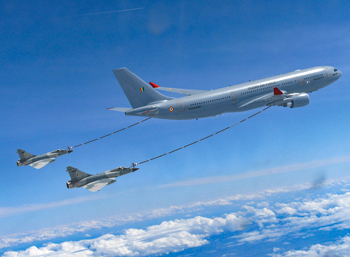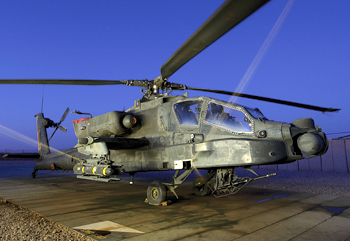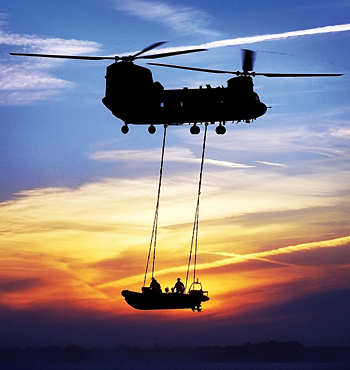INDIAN ARMED FORCES CHIEFS ON OUR RELENTLESS AND FOCUSED PUBLISHING EFFORTS

SP Guide Publications puts forth a well compiled articulation of issues, pursuits and accomplishments of the Indian Army, over the years

"Over the past 60 years, the growth of SP Guide Publications has mirrored the rising stature of Indian Navy. Its well-researched and informative magazines on Defence and Aerospace sector have served to shape an educated opinion of our military personnel, policy makers and the public alike. I wish SP's Publication team continued success, fair winds and following seas in all future endeavour!"

Since, its inception in 1964, SP Guide Publications has consistently demonstrated commitment to high-quality journalism in the aerospace and defence sectors, earning a well-deserved reputation as Asia's largest media house in this domain. I wish SP Guide Publications continued success in its pursuit of excellence.
Scaling new heights!
On the occasion of the 83rd Anniversary of the Indian Air Force (IAF), Air Chief Marshal Arup Raha, PVSM, AVSM, VM, ADC, Chief of the Air Staff and Chairman, Chiefs of the Staff Committee, spoke to Jayant Baranwal, Editor-in-Chief, SP’s Aviation

SP’s Aviation (SP’s): With India emerging as a regional power, the nation will justifiably aspire for leadership in the region. In this context, what in your view would be the role and responsibilities bestowed upon the IAF?
Chief of the Air Staff (CAS): The IAF has been given the role and responsibilities to remain a modern, flexible and professional aerospace power with full spectrum capability to protect and further national interests and objectives. It is the responsibility of the IAF to offer sovereign options to the political leadership and the IAF endeavours to be the first responder to contingencies. The IAF today is moving ahead confidently on its growth path towards acquiring state-of-the-art cutting-edge technologies and we have made very good progress in this regard. The acquisition of modern technology weapons and platforms has greatly enhanced our all-weather operational capability, besides enhancing our strategic reach. The IAF’s strategic footprint and capabilities serve the ends of military diplomacy and nation building.
SP’s: In a unipolar world of today, in your view, what course must India adopt to achieve a balance of power in the region vis-à-vis China?
CAS: Threat and security assessment is a natural and ongoing process for a country to ensure its national security. We are enhancing our capability to meet various multidimensional threats that we may have to address in the future. Our modernisation plan and infrastructure development is in sync with our endeavour to retain a ‘Combat and Capability Edge’. The IAF’s focus is on its capability enhancement and is not country-specific.
SP’s: In view of the problems afflicting the Hindustan Aeronautics Limited’s (HAL) intermediate jet trainer (IJT) programme and the uncertainty of time frame in which the jet trainer could be made available, what are the options before the IAF to replace the ageing Kiran fleet?
CAS: We had inducted the Pilatus PC-7 Mk II aircraft for Stage-I flying training of ab-initio pilots. The feedback indicates that the PC-7 Mk II, with its state-of-the-art cockpit displays and avionics, is an excellent basic trainer aircraft which can also undertake several facets of Stage-II or intermediate level training. The Hawk advanced jet trainer (AJT) is already integrated into the IAF’s training pattern. Both these trainer aircraft are supported by effective simulators. Hence, the IAF has initiated the process for conducting a flying training pattern based on two aircraft types: viz PC-7 Mk II and Hawk AJT, to replace the ‘three aircraft – three stages’ programme that had so far been in place. Limited number of flight cadets have already commenced training on this pattern and the numbers will be gradually enhanced with increase in the number of PC-7 Mk II aircraft on the inventory of the IAF.
SP’s: With Airbus Helicopters joining hands with the Mahindra Group and Russia likely to partner with HAL, both to produce light utility helicopters to replace the Cheetah/Chetak fleet, what would be the fate of HAL’s plan to develop an indigenous platform?
CAS: HAL’s light utility helicopter (LUH) is an indigenous development and is presently at design and development stage with active involvement of the IAF. In the interim, the IAF has recently signed a contract with HAL for the procurement of 10 Cheetal helicopters to make good its immediate shortfall in operational requirement. Arrival of Mahindra Group will increase the competition and the country will stand to benefit from it.



SP’s: Can you please provide us with an update on some of the major acquisition programmes which have been in the pipeline – for example, A330 MRTT aerial tanker, Apache and Chinook helicopters as well as Special Mission Aircraft?
CAS: The Indian Air Force is continually enhancing its capabilities across the entire spectrum of current and envisaged roles. Towards this, contracts for procurement of heavy-lift helicopters and attack helicopters have already been signed with Boeing and the US Government by the Ministry of Defence. Flight refuelling aircraft, additional C-130 aircraft and AWACS are at an advanced stage of processing.
SP’s: Could you please give us your views on the recent reports in the media about the global tender that will be floated for 90 combat aircraft to be manufactured in India under the ‘Make in India’ scheme?
CAS: As of now, we are progressing the case for the procurement of 36 Rafale aircraft from France under an Inter-Governmental Agreement. A decision on induction of additional fighter aircraft would be taken by the government.
SP’s: How do you perceive the future of ‘Make in India’ programme especially as HAL has failed to meet with SQRs laid down by the IAF for the light combat aircraft (LCA) that has taken 32 years to get IOC?
CAS: The ‘Make in India’ thrust is not organisation-specific. It envisages a comprehensive and synergised national effort involving the private as well as the public sector, towards achieving a high level of self-reliance in all fields of aircraft manufacturing. There is a need to build up our manufacturing capacities and also to undertake intensive skill development of the workforce to enable it to handle the latest technologies and best practices. The opportunities available in defence manufacturing, especially in the aviation sector, are multifarious and the future is certainly bright for the growth of indigenous defence and more specifically, the aerospace industry.
SP’s: There is a general belief that UCAVs and UAVs will play a major role and will occupy predominant position in military aviation in the future. What is the IAF’s perspective and plans if any in this regard?
CAS: The IAF has been closely monitoring the growing role of remotely-piloted aircraft (RPA) in the military domain. We have plans for enhancing the RPA fleet of the IAF over the next few years. This will involve increasing their numbers as well as capabilities. The indigenous medium altitude long endurance (MALE) UAV ‘Rustom II’ is under development by the Defence Research and Development Organisation (DRDO). The future scenarios will be a mix of manned and unmanned platforms capable of responding to the entire spectrum of threats.
SP’s: How has IAF benefited from Exercise Indradhanush that was conducted in July this year jointly with the Royal Air Force (RAF) in the UK? Would you like to comment on the reports in the media about the claims of superior performance by both the IAF and RAF? Could this not have been avoided?
CAS: IAF undertakes bilateral exercises with various friendly foreign countries like the US, UK, France, Oman, UAE, Singapore and Russia. The overall aim of these exercises is to enhance mutual understanding of different air forces. It exposes IAF aircrew to near real-time scenarios under safe and controlled conditions and presents opportunity for the aircrew to tackle new types of aerial and ground threats in large force engagements. Exercises with friendly foreign countries are carried out in a controlled and simulated environment with mutually agreed Rules of Engagement. Since the actual capability of the participating aircraft is not used fully, such international exercises do not reveal the actual wartime performance of various aircraft. Classic wins/losses in such exercises with friendly foreign air forces cannot be quantified. Conduct of such exercises with professional air forces of the world establishes interoperability, exposure to best practices in air operations and mutual respect for professionalism amongst air warriors.
SP’s: Can you provide an update on the case of appointment of a Chief of Defence Staff (CDS)?
CAS: The creation of CDS is an incremental process and has been supported by the three Services and other agencies. As per recommendations of the Naresh Chandra Task Force, the Chairman COSC would be one of the three Service Chiefs appointed by the government and would be the single-point contact between the government and the three Services. He would thus be the fourth four-star officer who would also be responsible for the various Tri-Service Operational Commands. The Service Chiefs will continue to exercise operational control and staff functions over their respective Services and have direct access to the Raksha Mantri. The proposed set up will allow HQ IDS under the Chairman COSC to function as an effective advisory system to the government on matters of policy, joint acquisitions, joint capability building and training. The issue is pending with the government.
SP’s: What are the areas in which IAF is collaborating with the Indian Space Research Organisation (ISRO) in the regime of manned space flights in the future?
CAS: At present, IAF is actively involved with ISRO for the requirements of space. The prospect of manned space flight would be considered at the appropriate time.
SP’s: What are the measures being taken towards boosting of the morale of the ‘Man behind the Machine’ in the IAF?
CAS: The IAF vision states: ‘People First, Mission Always’. People are the most important assets of the IAF and therefore the professional growth of all air warriors and their morale are vital KRAs (key result areas) of all our Commanders. Towards that, we have ensured transparent implementation of policy giving adequate and equal opportunity to all for professional growth. There is a merit-based system in place to select personnel for challenging appointments and promotions. We have regular interaction for personal requirements of any individual in need through choice posting, which meets both organisational and individual requirements, subject to service exigencies. Also, collocation posting requests by serving married couples are viewed favourably as far as possible and within the constraints of administrative and operational feasibility. There are various open forums, online and otherwise, that have been instituted where air warriors can approach senior leadership to address various HR and administrative issues. Suitable grievance redressal mechanisms have also been put in place. Great emphasis is being laid on enhancing the standard of living and quality of life by providing better educational facilities for children, accommodation, sports infrastructure, secured clean and green environment, modern shopping complexes, entertainment facilities, etc.
Women officers of the IAF have proven to be a force to reckon with and have stood shoulder to shoulder with their male counterparts. We are indeed very proud of them. The policy on employment of women in combat roles would normally be based on Tri-Service recommendations taking into consideration unique service conditions. We have made progress on the employment of women officers since their induction in 1992 in all branches including the Flying Branch. The IAF operational environment is suited for induction of women in fighter flying. This would be a progressive step to fulfil the aspirations of young women of India.





